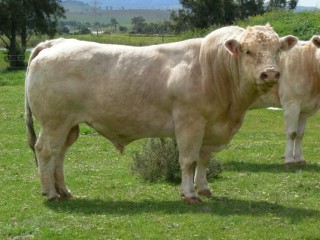 Many beef herds will have started calving by now and I have already reviewed one case where more than half of first calf heifers have had to be assisted so far. Such a situation prompts a review of ‘what went wrong’.
Many beef herds will have started calving by now and I have already reviewed one case where more than half of first calf heifers have had to be assisted so far. Such a situation prompts a review of ‘what went wrong’.
Breedplan data show that the majority of variation in the calving ease Estimated Breeding Value (EBV) is explained by birthweight.
In other words, the size of the calf is by far the most important factor in determining whether calving problems are likely.
In turn, calf size is affected by environment (eg nutrition) and genetic factors such as sire and dam genotype, calf sex (bulls are bigger) and hybrid vigour.
Things that increase growth and mature size of the animal also seem to increase birthweight.
For example, European breeds noted for rapid growth have traditionally been linked with heavier birthweights.
Similarly, selection for growth in any British bred herd also generally increases birth weights.
This fact recently prompted the concern that bulls from some extreme framed American Angus herds should only be considered as terminal sires.
Selection for moderate calf size in European breeds means that calving problems using these bulls over British breeds are a lot less common than they once were but producers should still use EBVs to manage the risk.
A recent field day attended by the Scone More Beef From Pastures group were impressed to learn that the Doyle family at Nundle currently join a moderate birthweight Simmental composite bull over their 15 month-old angus heifers and haven’t had a problem from 150 heifers calved over several seasons.
Crossbreeding to utilise hybrid vigour also increases growth rates in progeny. Guess what? Historical research from the NSW DPI Grafton Research station showed that calf size increased in roughly the same proportion as growth, ie around a 10% when using Euro bulls over British cows.
Another factor often discussed is that of calf conformation. It is common to hear that “bulls with big heads and big shoulders” should be avoided as their calves may inherit this shape and cause calving problems. Other producers argue that it is important to distinguish muscle from bone since well muscled bulls have noticeable shoulder bulges, and research indicates that muscling has no impact on calving ease.
I wondered about this issue during my recent trip to Canada, after viewing a herd of bison in Riding Mountain National Park, Manitoba. Some bulls weigh over a tonne and their most striking features are their huge heads and shoulders.
Apart from making them a desirable trophy it hasn’t hindered their survival for thousands of years!
That brings me back to the point that birth weight is the biggest determinant of calving ease and that commercial producers should have access to the most important genetic data: direct calving ease or birthweight EBVs.
This article originally appeared in the September 2012 edition of NSW DPI Beef News, issued September 13.
